At school Hanny Newton focused on her academic subjects, not realising that embroidery could be a career option. But after a few false starts, and gaining many useful life experiences along the way, Hanny gradually gravitated towards her contemporary goldwork destiny.
It all started when, one day, a wise friend suggested that hand embroidery could be more than a hobby. This comment led Hanny to complete a foundation degree at the Royal School of Needlework as well as a degree in Contemporary Craft at Falmouth University. In time she became drawn to the glittering possibilities of working with metal threads.
Hanny’s goldwork is abstract, exciting and contemporary. She uses pattern and shading to make the most of the sparkling and reflective qualities of her metal materials, contrasted against her favourite backgrounds of soft fabric in shades of grey.
A favourite technique is couching, which Hanny uses to reflect on the meditative patterns found in the natural world.
Inspired by the rich heritage of goldwork embroidery, Hanny delights in playful experimentation, innovating to push the technique into a contemporary sphere. And using the concept of limitations allows her the freedom to explore, without becoming overwhelmed by the limitless possibilities.
Hanny’s story will inspire you to embrace experimentation in your process. And when you see her stunning abstract artworks, you’ll want to experiment with the glitz and glamour of metal threads in your own work.
Gold play
Would you tell us a bit more about goldwork?
Hanny Newton: Goldwork embroidery is a prized ancient technique with rich traditions. I like to push the boundaries of what metal threads can do. I aim to balance technical accuracy with exploration, without being confined to the traditional rules of the technique. This results in a more contemporary outcome.
I am fascinated by the way metal threads play with light. Different types of metal bring a range of beautiful qualities to a piece of work. The hardness of the metal brings an unexpected contrast to the soft medium of textiles. Using the simple technique of couching, where one thread holds another down onto the canvas, a whole universe of possibilities appears. Materials, patterns, shading, colours and light-reflective qualities can all be varied and explored to great effect.
I work mainly on grey fabrics, which allow the metal threads to shine. To add variety, and change the mood of the piece, I use different tones and shades of goldwork materials.

How do you create your artworks?
A lot of my pieces start with a question: ‘What happens if…?’
I find that if I simplify my work down to a single stitch type or one idea, it gives me more freedom to explore than if I had a world of overwhelming possibilities.
Once I have an idea I tend to become quite obsessed with it, such as with my experiments with lines. I have an image fixed in my mind and feel compelled to get that image out of my head and onto canvas.
I often work directly on the final piece without too much sampling beforehand. I test my ideas as I go along. I can always unpick my stitches! Starting with an idea, I allow it to shift and change as the piece evolves, seeing where it takes me in the moment.
My work is mostly abstract and has a lot of personal meaning behind it. I use the flow and direction of stitch to describe my emotions. For example, I explored anxiety through my series Paresthesia – the scientific term for ‘pins and needles’, which is derived from the Greek for ‘disordered perception’.
I created a series of gold circular pieces in fine Japanese thread. It struck me that groups of lines in metal thread would capture the light in different ways. From this thought, I began to explore the idea of breaking down goldwork into the simple concepts of light and gold.
As I stitched inside the circles, I found that varying the density of stitches gave a feeling of ambiguity; the pattern could be breaking apart, or coming together. This is how anxiety makes me feel, so I followed this thought as I stitched. I swapped between three canvases, playing with different approaches and ending up with a triptych of works.
New ideas come while I sew, as the meditative act of stitching allows my mind to ponder.
I always have other pieces of work on view as I work. I often switch between them, so that I can act on ideas as they come to me. My projects usually feed into each other so I have several pieces of work on the go simultaneously. This gives me flexibility as I don’t feel too tied to one particular idea and I can move freely between concepts. I have found this approach makes my work stronger, giving me space to think about one piece as I’m working on another.
I use a sketchbook regularly. I love the speed at which I can get ideas out of my head and record them on paper – far quicker than by stitching. The sketching feeds into my stitched work, and my stitching feeds into what I draw. I find it really interesting to have a collection of drawings to look over and take ideas from; they help to keep my work moving forward.


Stitching is accessible
How did embroidery first capture your imagination?
I love the immediacy and accessibility of stitching. Anyone can pick up a needle and thread for very little money, and you can stitch pretty much anywhere. Unlike ceramics or woodwork, I don’t need expensive specialist equipment or a designated space to stitch. I can take my embroidery on the bus, to the park or the pub. My work-in-progress can travel with me and be a part of my life, whenever and wherever I want it to.
With embroidery, I love that nothing is permanent. If I make a mistake, I can easily unpick my stitches and re-do them! This makes it the perfect jump-off point for me, as it allows me to explore and play freely.


What or who were your early influences?
As a child, I was encouraged to be creative in quite a free way. Creating a mess while playing definitely wasn’t a problem for my parents. I think this gave me quite a lot of freedom to create and imagine. I have never felt pressure from my family to follow any other path than my own.
I remember Mum digging a hole in our garden and filling it with water for us to play in. She would spray an entire can of shaving foam onto the kitchen table and let us have fun moving it around and making shapes. At every birthday party, we would choose a theme and create decorations, costumes and cakes at home.
I suppose there was an understanding that having fun making something yourself was more interesting than just buying perfect, ready-made things. I know this has been a big influence on my life.
In terms of discovering textiles, my maternal grandmother was definitely my biggest influence. As a keen embroiderer, she would make clothes and I was always so excited to receive something she had made especially for me. She encouraged me to stitch, giving my sister and me sewing baskets full of everything we would ever need – I still use the monogrammed fabric needle book she made for me. I remember her studying City and Guilds courses and just how amazed I was with all her creations. It impressed me that she could make what she needed and not rely on buying.

What was your route to becoming an artist?
Art was not something I had considered pursuing in my teens and early twenties. I studied academic subjects but always felt that there was something missing. Studying felt like watching life happen to others rather than living it for myself.
When I was 23, I was living as a voluntary worker in a Camphill Community. This school, for people with learning disabilities, mental health problems and other special needs, was based around the philosophy of Rudolph Steiner. The work was fantastic but intense, so I started stitching to gain a balance and do something just for me. Remembering the skills my grandmother had taught me, I became hooked.
I loved the fact that when you stitch, the whole universe shrinks down to the size of your canvas. It was quite a revelation.
At this point, I had taught in Thailand for a year, studied anthropology and religion for 18 months at Manchester University (before realising it wasn’t for me), and I’d worked as an au pair in Monaco. I had never pursued anything creative beyond it being a hobby.
One day, I showed my stitching to my friend Kathleen who had studied art in London. She pointed out that I could study embroidery and that it didn’t just have to be a hobby. Completing an art degree had never even occurred to me! I really owe her a lot for that wise and foresighted comment.
After studying foundation art and design for a year back home in Shropshire, I landed a place at the Royal School of Needlework’s two year foundation degree course. There, I explored hand stitch techniques and learned about the rich heritage of embroidery.
During my studies, I discovered the magic of using my own hands to create something drawn from my head and my heart. After completing this course, I went to Falmouth University to study for a degree in Contemporary Craft. I immersed myself in this totally different environment, away from the traditions of the Royal School of Needlework. It was here that I discovered that I wanted to use my embroidery skills in a contemporary way.

What inspires you?
I keep coming back to the concept of line – how a seemingly ‘simple’ line can have so many possibilities for expressing emotion and personality, depending on subtle changes to how I stitch it. Is that stitched curve large or small? Gradual or steep? Is it repeated or the only one of its type?
The range of possibilities of what a thread can ‘say’ has the potential to overwhelm me, so I ask questions: Where do I start? What am I trying to say? Should it be bold and busy, or quiet and subtle?
I remind myself that I can only make one choice at a time, and I keep reigning myself in. I try to choose what feels right in that moment and trust that it will all fit together. This approach is definitely a work in progress for me – I am no stranger to Option Overwhelm!
I recently read Why We Make Things And Why It Matters by furniture maker Peter Korn, and was so inspired by his lifelong dedication to his craft, and his pursuit of wood working as a way to know himself and find his place in the world. My inspiration comes from the act of sewing itself. One simple stitch is multiplied through human graft, building substantial works from small initial gestures. Repetition, time, patience and dedication are all essential to hand embroidery. One must, to some degree, humble oneself to the generative process of making.


Communicating through stitch
Which of your works holds particularly fond memories?
An out-of-the-blue phone call from the head of Adult Programs at the British Museum led to an interactive goldwork project held in the Great Court of the British Museum.
I was tasked with responding to the 2017 exhibition Scythians: Warriors of Ancient Siberia, exploring the lives of the nomadic tribes of Siberia 2,500 years ago. The project drew on the Scythians’ love of gold and horses and I was asked to create goldwork activities for the themed evening sessions, in which people of all ages and abilities could take part.
This opportunity was beyond my wildest dreams!
I developed a series of drop-in embroidery workshops, designing hand-printed motifs for embellishment, inspired by the swirling patterns found in Scythian art. There was no right or wrong; the designs simply provided some pattern to follow, if needed.
I wanted to show people that anyone can embroider, so I designed my motifs to be enticing and accessible.
The embellished and embroidered motifs were used to adorn an amazing steam-bent wood sculpture created by the artist Beatrix Baker, which was inspired by the incredible depictions of antlers in Scythian art.
There was a moment on the final night where I took a step back and saw our packed-out workshops with over fifty people of all ages, nationalities and genders stitching together, and I realised then how powerful making can be.
It was by far the largest project I have ever worked on, and it would be an outrageous lie to say it wasn’t terrifying at times! I had to learn to trust my ideas, without really having a reference point for whether it would actually work. This project encouraged me to continue to create and run workshops and share my passion for creative goldwork.

How has your work developed over time?
My work has become more focused. When I graduated I had a strong set of making skills and a passion for embroidery but, looking back, I didn’t have a fully formed sense of how I wanted to apply those skills to a coherent practice. I progressed from embroidered felt rocks at Falmouth University, to goldwork bowties, to wall pieces exploring contour lines, to wedding embroidery. I exhibited often, but in a chaotic way, rather than spending time honing my ideas.
Once I realised I needed to give myself the space to make work without pressure, I began to explore my practice properly. My work became stronger as I stripped back my practice to the elements that interested me the most. I realised that the most honest thing I could do was to use my art to say something about my emotions, especially my struggles with anxiety.
I decided to use stitch to mark my place in the world, to explore what I can do with goldwork and to express my thoughts. This attitude allows me to be more brave with my art.
I find that embroidery is a great medium for capturing the swelling emotions I feel. The act of capturing an emotion using these beautiful shining metal threads allows me to consider the positives of my character – it is an empowering process.
I intend to keep pushing how I use stitch and keep on trying to be honest about who I am in my work to see where this takes me.
I love teaching goldwork, breaking down some of the notions of how it should be used, and sharing the joy of working with metal threads and a few simple stitch techniques. I’m really enjoying seeing this area of my life grow and evolve, as I teach.

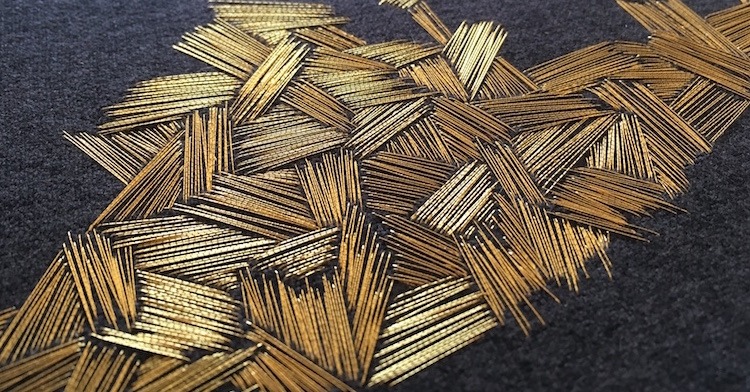
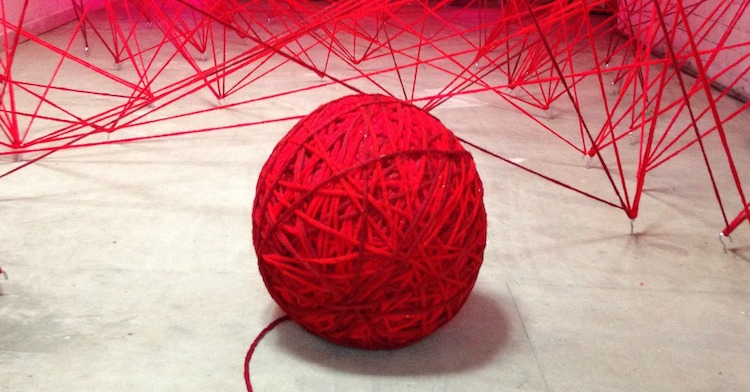
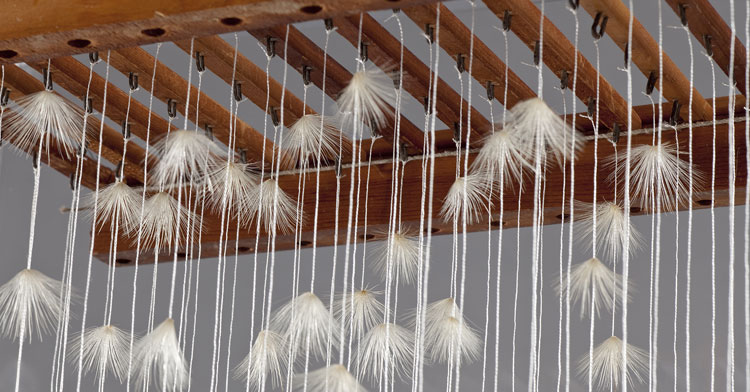
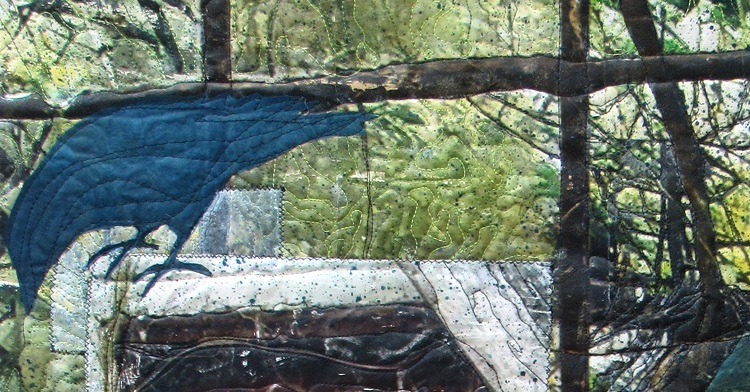
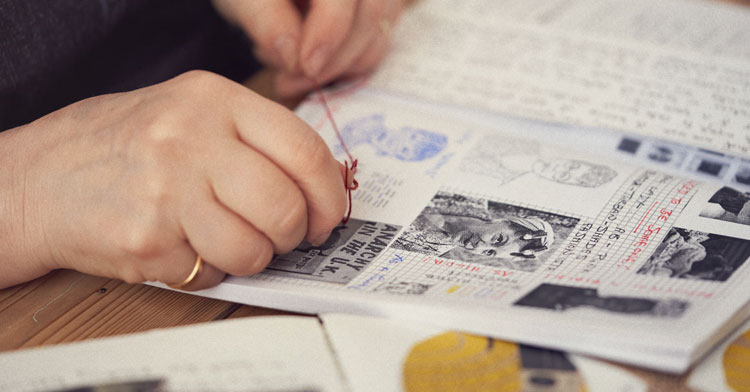
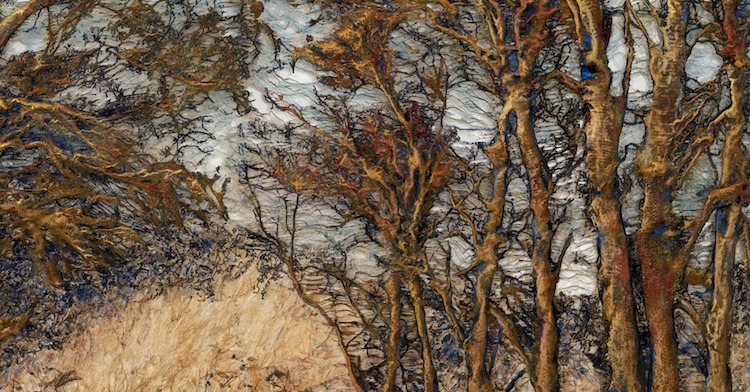
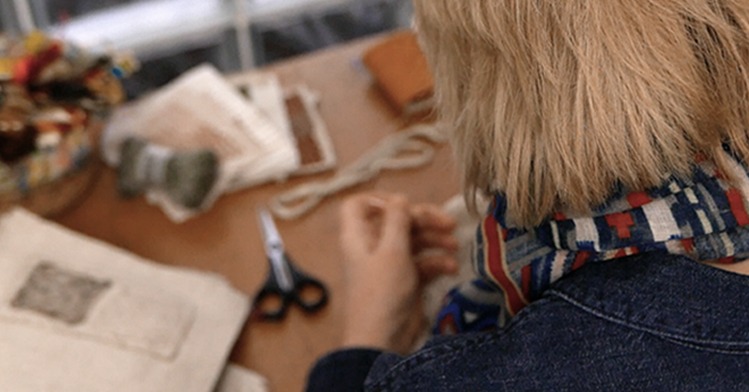
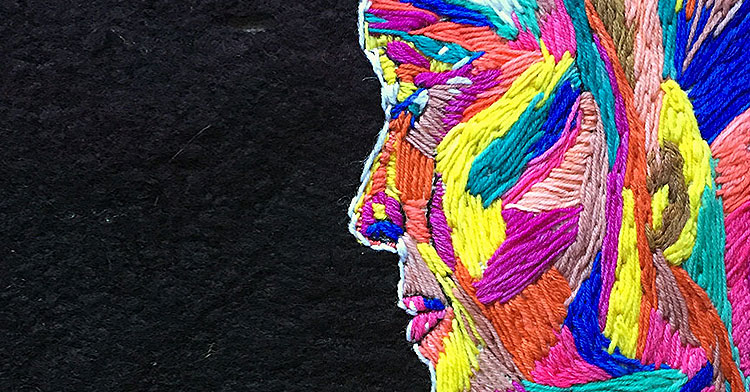
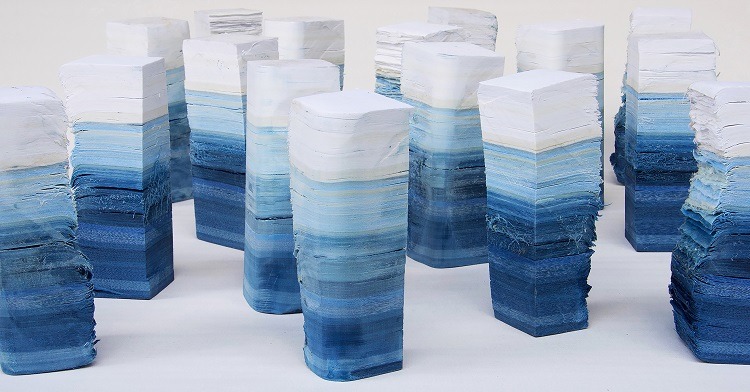
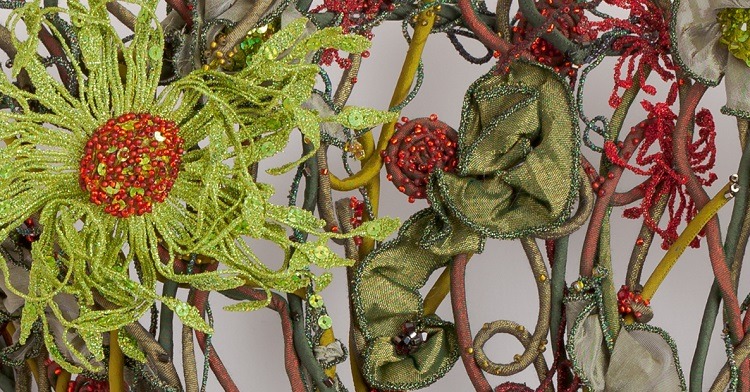
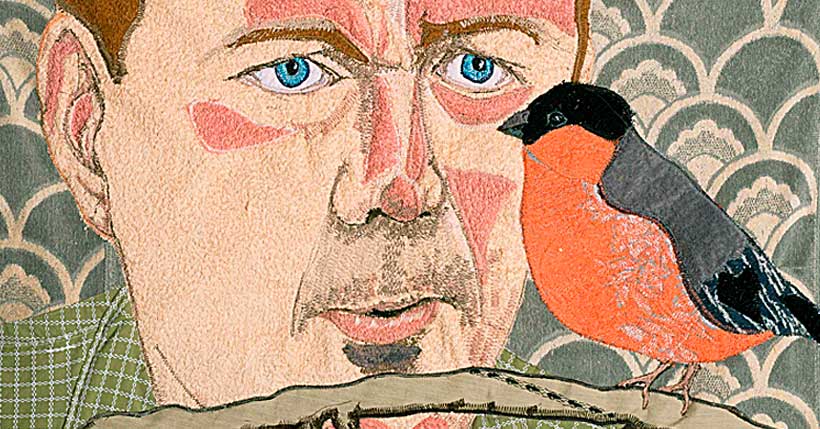
Comments